Vincents passion for pipe smoking
Auteur:
Benedict Goes
Original Title:
Vincents passie voor pijproken
Année de publication:
2015
Éditeur:
Amsterdam Pipe Museum (Stichting Pijpenkabinet)
Colleagues in The Hague with a pipe
As a pipe smoker, Vincent naturally has a focus on the pipe of his colleague friends. Some portray themselves with a pipe, others draw models while smoking a pipe. Not surprising, because the tobacco pipe still played an important role in the nineteenth century. It are these details that Vincent immediately notices.
Vincent writes enthusiastically to brother Theo (letter 257, August 1882)
As you may know, there is an exhibition of the drawing society. There are beautiful Israels - including the portrait of Weissenbruch, with a pipe in the mouth & his palette in hand.
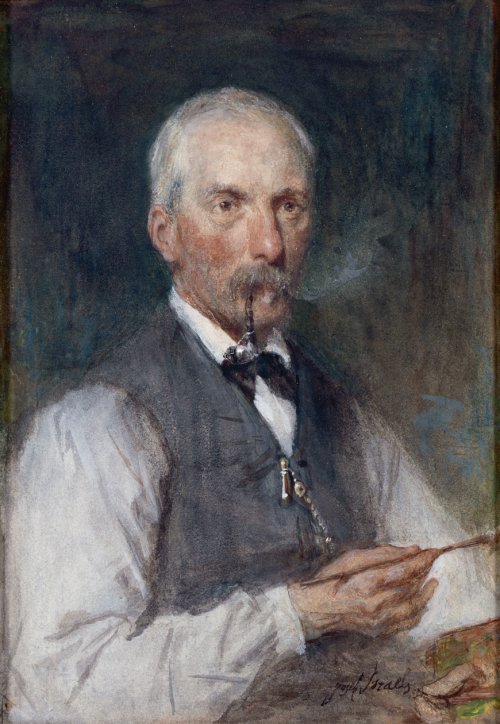
It is a portrait of Jan Hendrik Weissenbruch by Jozef Israëls, on which the older, distinguished Hague painter smokes an apparently simple hanging pipe with a metal lid and chain (Fig. 46). A puff of smoke swirls between his lips. In reality it is a pipe with a porcelain bowl, covered with a metal spark catcher (Fig. 47). With this more luxurious smoking equipment, the Hague painter distinguished himself from ordinary Dutch artists who mainly smoked clay pipes
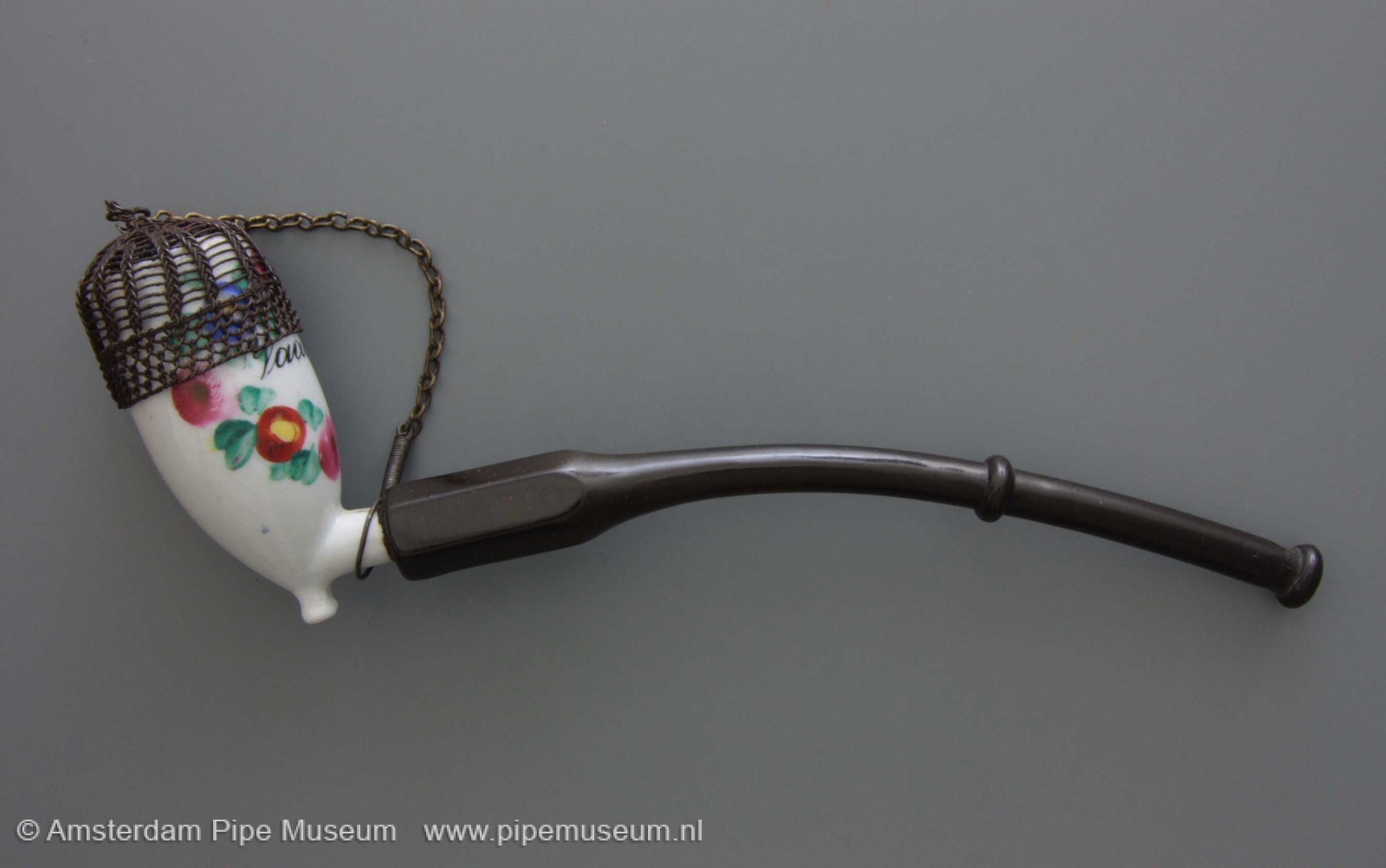
Vincent is a big fan of the somewhat older Jozef Israëls. He admires an etching of a farmer lighting his pipe (Fig. 48). In a letter (letter 326, March 1883) to Theo, Vincent reports:
I already wrote to you about those two great etchings of Israels, a man lighting his pipe and an interior of a workers house. How beautiful they are. - I think it is so beautiful of Israel that he continues to etch.

It is a scene that appeals to Vincent, because he also painted many similar scenes: a small farmer in a stuffy room of a poor farm. The farmer here sits on a chair in front of the fireplace and lights his pipe with a glowing coal held by a huge poker. The pipe is too sketchy to be easily recognizable. Vincent himself had drawn countless similar farmers, fishermen and servants with a pipe.
French colleagues
Vincent's best friend is Paul Gauguin. This painter also made numerous portraits of pipe smokers, almost always simple men smoking from a typical clay pipe (Fig. 49). The greyish hue can indicate both a smoked pipe, or it can be chosen from painterly motifs, in order not to be a highly distracting element in the portrait.
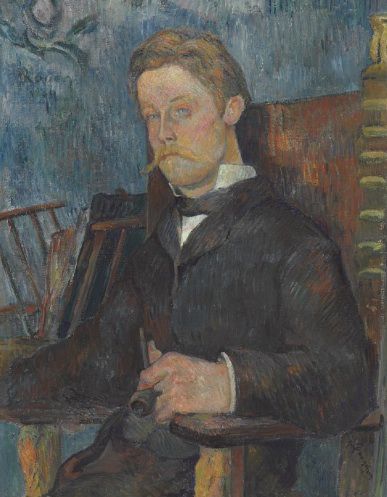

Pipe and pipe smokers are even more prominent among the painter Paul Cézanne. The pipes he depicts sometimes contrast beautifully with their bright white colour against the rest of the painting (Fig. 50). In addition to single portraits and portrait studies, Cézanne's best-known pipe smokers are simply those depicted on his card players (Fig. 51). There are several versions of this topic and one of them has recently become known as the most expensive painting ever. It has been sold to the Sultan of Quatar for the impressive sum of 250 million dollars. The depicted copy even has a rack with four short-stemmed clay pipes in the top corner of the painting, emphasizing the homely character of the artwork (Fig. 52).
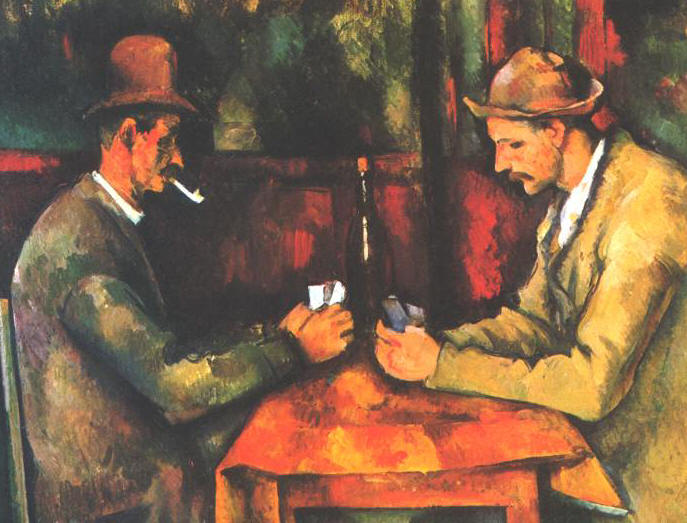
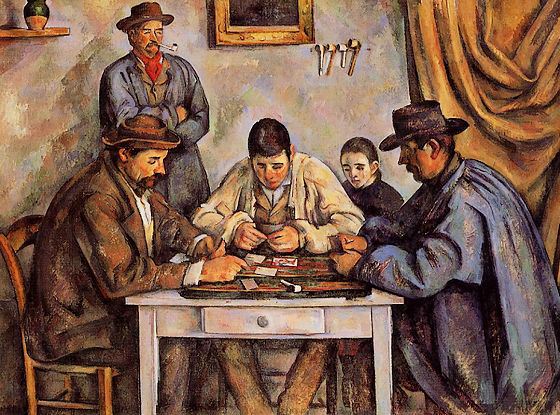
The painter August Renoir has some beautiful portraits showing pipe smokers. For example, he captured the painter Monet twice, both reading and with a pipe in his mouth. A short clay pipe is depicted in both works of art, the first provided with a so-called meerschaum-coloured lacquer, which makes the pipe look much more expensive (Fig. 53). Here Monet smokes from a beautifully modelled trunk-shaped tobacco pipe (Fig. 54). In the other painting he again smokes an ordinary white clay pipe, the traces of which have broken through brown are clearly visible again (Fig. 55).
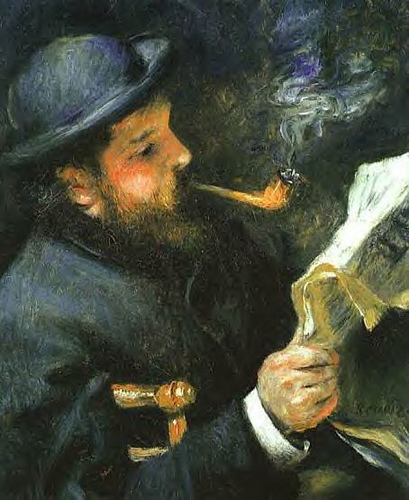
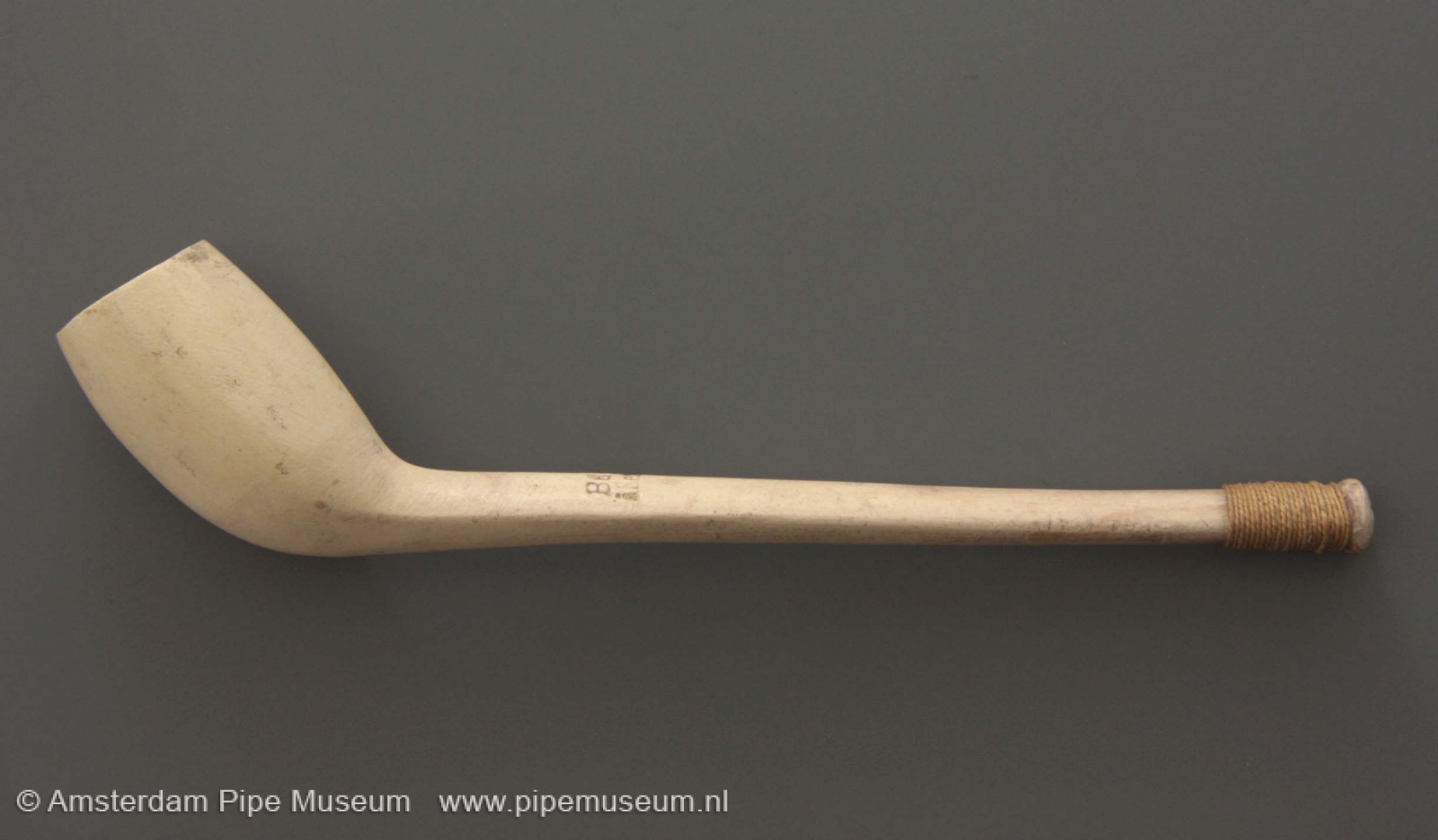
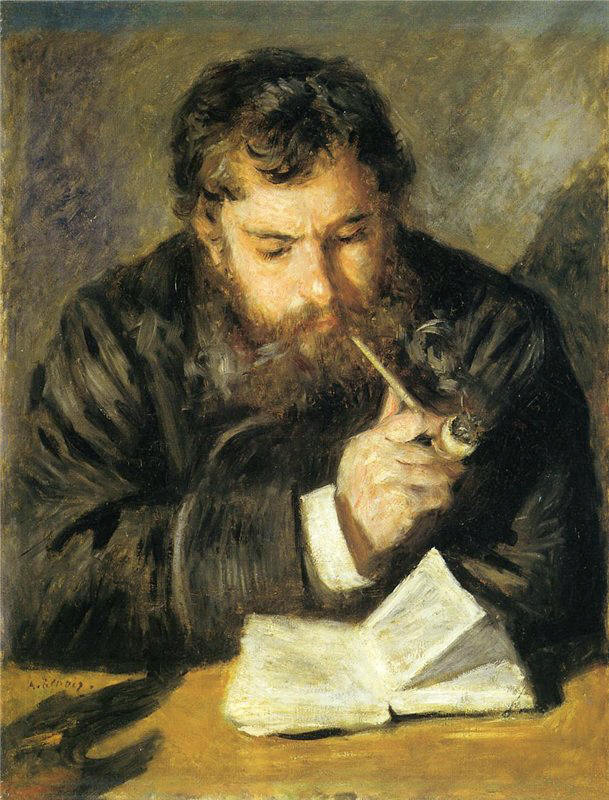
In a painting by Chaim Soutine we see a special pipe (Fig. 56). It is a still life of a table on which, among other things, a pipe. Here you can see a calabash-shaped pipe bowl mounted on a longer reed stem. It is certain that the artist provided the pipe bowl with a homemade stem, because normally the stems of such calabash pipes are never that long. Nevertheless, we have found such an exceptional shape, but now with a hard rubber mouthpiece (Fig. 57).


The pipe out of favour
Emile Bernard is a contemporary person and painter with whom Vincent often corresponded. He had met this fellow painter in Paris. Bernard - of whom here a self-portrait without a pipe (Fig. 58) - had a more worldly view. For example, he was very interested in the Levant, the Ottoman Empire. While traveling in 1900, he painted a local water pipe smoker in Cairo (Fig. 59), a scene that is very far from Van Gogh and shows the other kind of smoking: the use of hashish. Such smoking instruments were also painted according to reality and it is not surprising that we still come across these historical objects (Fig. 60), although the fragile earthenware bowls and the long stems are usually missing.
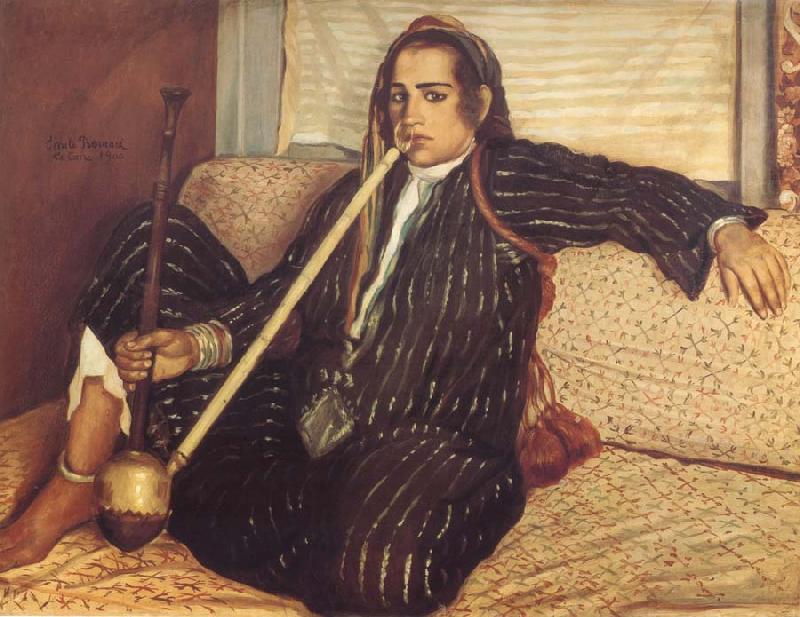

Smoking customs changed rapidly towards the end of Vincent van Gogh's life. Where Vincent remains faithful to his pipe, we see that an increasing number of smokers are attracted by the cigar. Vincent himself does not depict this in his paintings. Around him, the pipe is still being smoked. With other art brothers we see that the cigar is prominent. For example Paul Signac, exactly ten years younger than Vincent, experimented extensively with colours. His painting style was later referred to as pointillism. Both painters exhibited together in Paris. In Signac's painting Breakfast from 1887 we see that he painted a richer environment. The master of the house smokes a cigar from a typical tip shaped cigar holder made out of meerschaum with an amber mouthpiece (Fig. 61, detail). This image is typical for the higher society setting and shows the fashion of its time, but despite the technique of painting it is clear what kind of cigar holder is meant (Fig. 62).
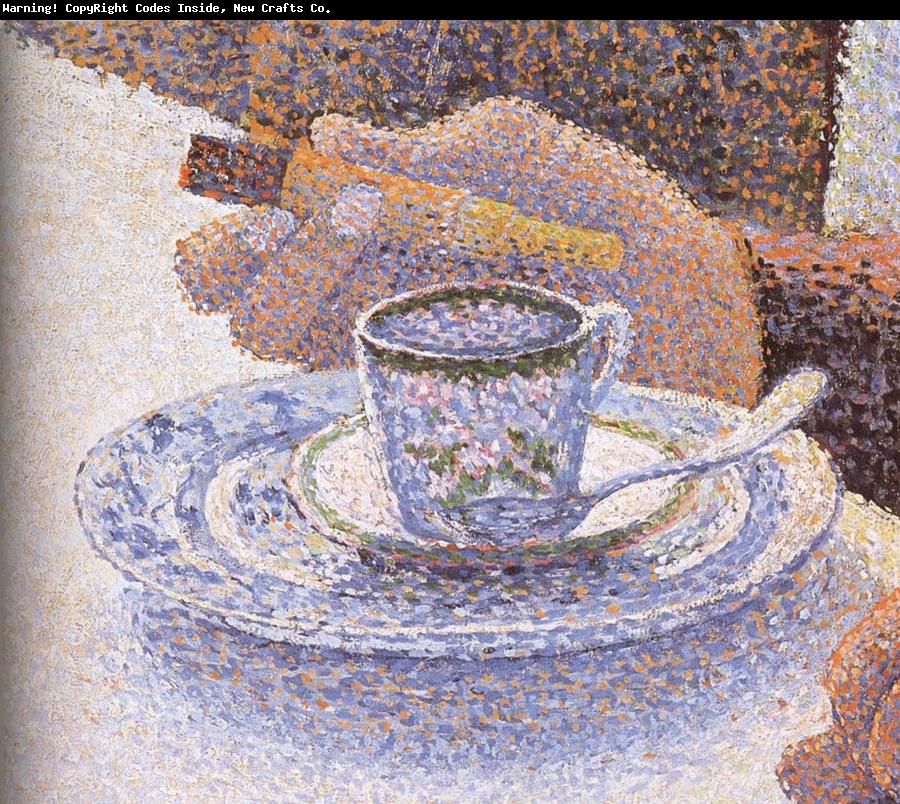
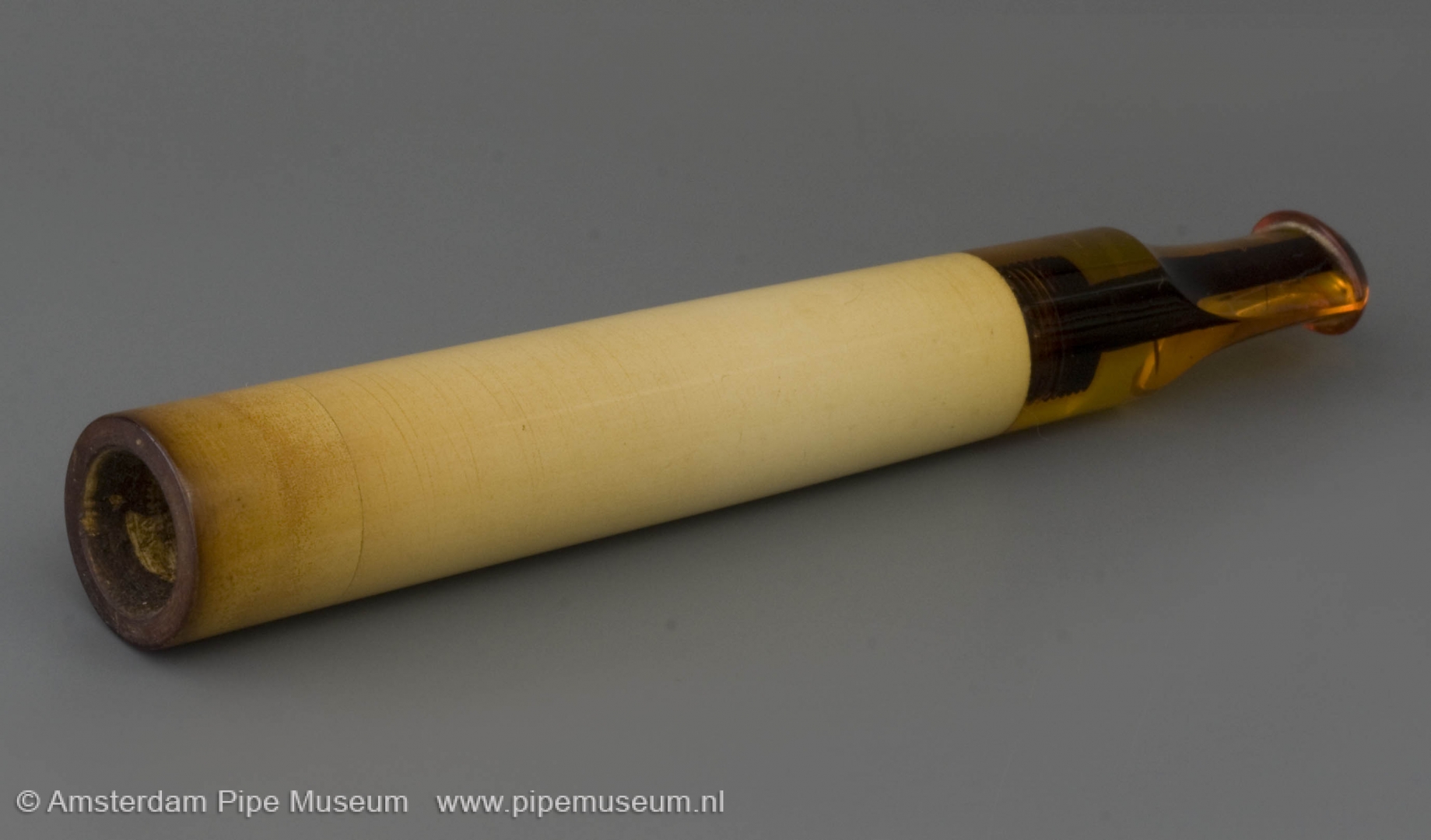
Henri de Toulouse-Lautrec is another famous artist from Vincent's circle. This painter, best known for his posters, had an eye for feminine beauty, which is why we encounter few pipe smokers with him. Born into an aristocratic family, Toulouse-Lautrec moved in completely opposite circles than Vincent van Gogh's. His portrait of Louis Pascal shows this clearly: a distinguished gentleman with a top hat and cigar (Fig. 63). The lack of a cigar pipe is quite unusual and in fact very modern at that time.
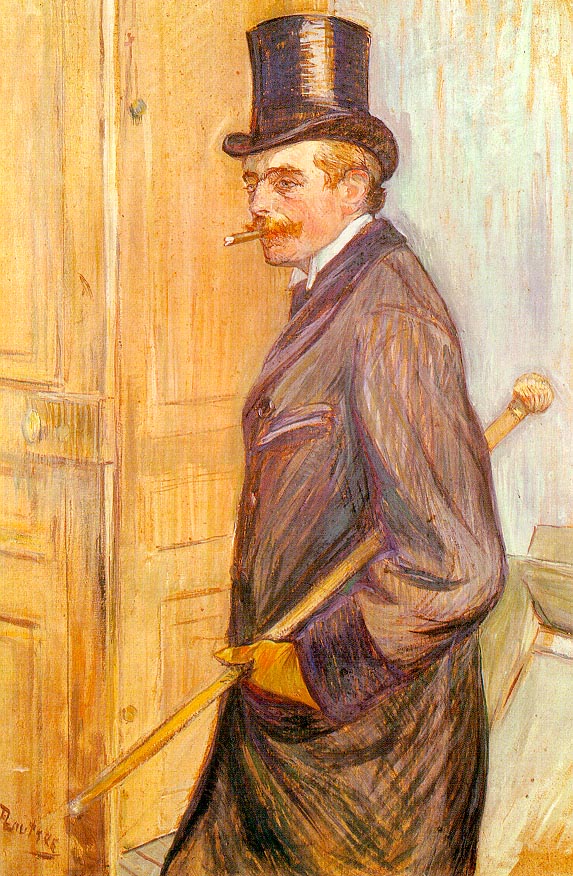
Looking back
We have seen that pipe and tobacco have been of great importance to Vincent van Gogh. He grew up with it and pipe smoking remained a lifelong passion for him. He seems to be the eternal pipe smoker, was although this is not completely true, since he quit smoking for a while when he didn't feel well. Smoking in good times is really characteristic of the pipe smoker. In the end pipe smoking is smoking in peace, relaxation and that enjoyment only fits with a good mood. For rest and contemplation after work, sometimes during the work. Vincent van Gogh had personally experienced this match of pipe smoking and tranquillity, so he did understand.
In the course of his life we see the choice for his smoking instrument change. In the Brabant or better Dutch period, the simple clay pipe dominates, the Dutch smoking device par excellence that was then still a general utensil. Once in France surrounded by artists, new loves for the tobacco pipe awaken. He then smoked the then popular mérisier or cherry wood pipe for years. The sturdy shape of this pipe and the slightly sweetening taste qualities make that explainable. The robust appearance of such a pipe also contributed to its popularity. Later he chooses an even more luxurious tobacco pipe, the briar. For the Dutch smoker from that period, the change in pipe choice is rather mundane and in this respect Vincent was ahead of his time. Yet this attitude is understandable when we consider that he entered artist circles, where the love for the tobacco pipe was more pronounced than with the common man.
At Vincent van Gogh we can therefore closely monitor his smoking behaviour, both in his correspondence and in his numerous works of art. This wonderful two-stream of sources now makes it possible to regain Vincent van Gogh's passion for his tobacco pipe. Specimen from the rich collection of the Amsterdam Pipe Museum make it possible to retrieve examples of the pipes in question. Of course, the Impressionist way of painting leaves room for speculation. Sometimes it is even impossible to identify a pipe from a work of art with certainty. The painterly freedom made the representation of a pipe part of the artwork, not a realistic copy of the object. This article gives the best possible insight in the pipes of Vincent.
© Benedict Goes, Amsterdam Pipe Museum, 2015.